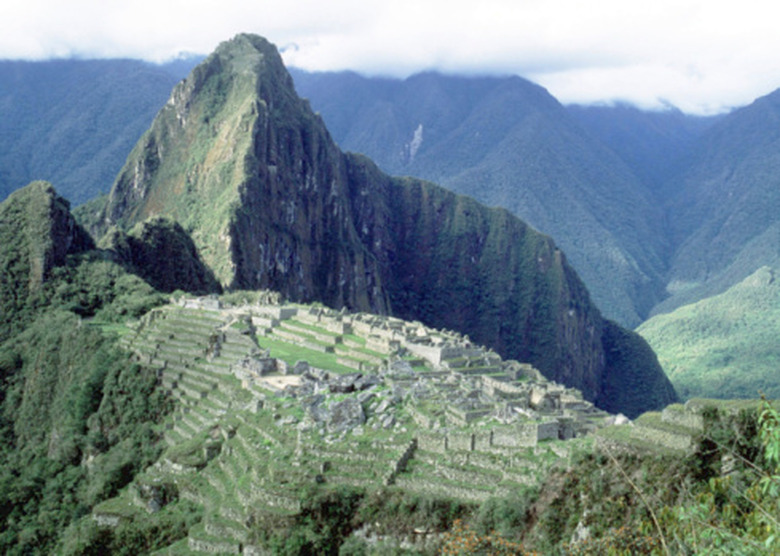Facts On Convergent Boundaries
What are convergent boundaries? Places where two tectonic plates meet, convergent plate boundaries are characterized by two plates moving towards each other. There are two other Oceanography(Hill'>types of plate boundaries/02%3A_Earth%3A_Formation_and_Structure/2.5%3A_Types_of_Plate_Boundaries): divergent and transform. Features of divergent boundaries include spreading ocean floors, as this type of boundary is characterized by two plates moving away from each other. Transform boundaries are where two tectonic plates slide past each other, often resulting in earthquakes.
Tectonic Plate Areas
Tectonic Plate Areas
Plate tectonics is a theory in geology that explains how the Earth's oceans and continents move over long periods of time. Tectonic plates are composed of lithosphere, which is a layer of the Earth made up of crust and upper mantle. These plates float on the layer below, called the asthenosphere, and the continents move with them.
A theory developed in the 1960s, plate tectonics has been supported by evidence from both the fossil record and instruments used to measure the movement of continents and the spread of the ocean floor. It explains the existence of a supercontinent, Pangea, that existed between 300 and 100 million years ago, and how Pangea broke apart to become the seven continents on the planet today.
Continental drift is the reason that Pangea no longer exists. Tectonic plates shift a few inches per year, moving the continents and oceans with them. Interesting things happen at the boundaries of these tectonic plates, including earthquakes, volcanoes, mountain range formation and hot spots.
Convergent Plate Boundaries
Convergent Plate Boundaries
Each type of plate boundary is associated with specific geologic formations and behaviors. Convergent plate boundaries are characteristic of places where two plates are moving towards each other. Due to differences in the density and temperature of the two tectonic plates, subduction often occurs at these boundaries.
Subduction is defined as the geological process that takes place when one tectonic plate moves below another plate. Essentially, the cooler of the two plates sinks under the warmer tectonic plate, and the lower plate melts back into the mantle of the earth. This process releases intense heat and magma, which sometimes makes its way to the surface of the earth in the form of volcanoes.
There are three types of convergent plate boundaries: oceanic-oceanic, oceanic-continental and continental-continental. At oceanic-oceanic convergent boundaries, two tectonic plates converge and form an oceanic trench. At oceanic-continental plate boundaries – places where an oceanic plate meets a continental plate – the oceanic plate subducts under the continental plate due to differences in density. In the case of continental-continental plate boundaries, the collision of the two plates produces mountain ranges like the Himalayas; neither tectonic plate subducts in this case.
Features of Convergent Boundaries
Features of Convergent Boundaries
As the subducted plate at a convergent boundary returns to the Earth's mantle, heat is transferred upwards to the crust and can become a volcano. When this occurs under the ocean, an island arc like the Caribbean Islands develops. At oceanic-continental boundaries where the subduction occurs under a continent, a continental volcanic arc like the Andes Mountains in South America may form.
Because continental tectonic plates are of similar densities, neither plate will subduct when two of them collide. Instead, mountain ranges like the Appalachian Mountains will form at the surface of the earth when two continental plates collide.
The places where magma rises from the Earth's mantle are called hot spots. Volcanoes often form at convergent plate boundaries where there are hot spots, but since tectonic plates are constantly shifting, sometimes the movement of plates causes volcanoes to move away from hot spots. When a volcano no longer is situated over a hot spot, it becomes inactive.
Cite This Article
MLA
Sloane, Christina. "Facts On Convergent Boundaries" sciencing.com, https://www.sciencing.com/convergent-boundaries-8580692/. 20 October 2021.
APA
Sloane, Christina. (2021, October 20). Facts On Convergent Boundaries. sciencing.com. Retrieved from https://www.sciencing.com/convergent-boundaries-8580692/
Chicago
Sloane, Christina. Facts On Convergent Boundaries last modified August 30, 2022. https://www.sciencing.com/convergent-boundaries-8580692/
